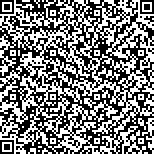| 本文已被:浏览 24862次 下载 8288次 |

码上扫一扫! |
| 池塘养殖和海上吊笼养殖仿刺参肠道菌群结构对比分析 |
| 陆振,杨求华,黄瑞芳,林琪,何丽斌,葛辉,周宸,杜虹 |
|
|
| (汕头大学生物系,广东 汕头 515063;福建省水产研究所,福建省海洋生物增养殖与高值化利用重点实验室,福建 厦门 361013) |
|
| 摘要: |
| 实验采用平板分离及16S rDNA序列分析法研究池塘养殖和海上吊笼养殖仿刺参(Apostichopus japonicus)的前肠、中肠和后肠菌群结构并进行对比分析.结果显示,从海上吊笼养殖的仿刺参的肠道内分离鉴定的240株菌株分属于3个门、11个属和34个种.从池塘养殖仿刺参的肠道内分离鉴定的211株菌株分属于3个门、11个属和49个种.两种养殖模式仿刺参肠道菌群结构存在较大差异,且同一仿刺参肠道各部分之间的菌群结构也存在较大的差异.海上养殖仿刺参的肠道优势菌群为弧菌属(Vibrio)、Formosa属、希瓦氏菌属(Shewanella),池塘养殖仿刺参的肠道内优势菌群为弧菌属(Vibrio)、芽孢杆菌属(Bacillus)、喜盐芽孢杆菌属(Halobacillus).两个菌群共有菌株有7个种,存在于在不同的肠道部位.两种养殖模式比较发现池塘养殖仿刺参的肠道菌群的丰富度大于海上吊笼养殖的仿刺参,且池塘养殖仿刺参肠道内芽孢杆菌(Bacillus)等益生菌的占比较高,海上吊笼养殖仿刺参分离得到较多的弧菌属(Vibrio)细菌.本研究可为南方仿刺参人工养殖中潜在益生菌的筛选提供基础资料. |
| 关键词: 海洋生物学 仿刺参 16S rDNA 肠道菌群结构 池塘养殖 海上吊笼养殖 |
| DOI:10.3969/J.ISSN.2095-4972.2017.02.005 |
|
| 基金项目:福建省科技计划资助项目(2014R1003-1);福建省海洋高新产业发展专项资助项目(闽海洋高新[2015]29号) |
|
| Comparative analysis of intestinal microflora sea cucumber cultivated in ponds and sea suspension cages |
| LU Zhen,YANG Qiu-hua,HUANG Rui-fang,LIN Qi,HE Li-bin,GE Hui,ZHOU Chen,DU Hong |
| (Department of Biology, Shantou University, Shantou 515063,China;Fisheries Research Institute of Fujian Province,Key Laboratory of Cultivation and Highvalue Utilization of Marine Organisms in Fujian, Xiamen 361013, China) |
| Abstract: |
| The intestinal flora is essential in shaping many of its host's functional attributes .The microbial community structure in gut,including anterior intestine,middle intestine and posterior intestine of sea cucumber (Apostichopus japonicus), was studied by 16S rDNA sequence analysis. The results showed that 240 strains were identified from A. japonicus in suspension cage closely relating to 3 Phylum, 11 genera and 34 different species. from the cultivated sea cucumbers in suspension cage. Similarly, 211 strains were relating to 3 Phylum, 11 genera and 49 different species from the sea cucumbers in ponds. The structures of flora were quite different between each part of intestinal, and microflora populations of the entire gut and between the sea cucumbers from ponds and suspension cage were quite different. Vibrio, Formosa and Shewanella were predominant flora in the gut of sea cucumber in suspension cage. Vibrio, Bacillus and Halophilous were predominant flora the gut of sea cucumber from in pond. There were 7 bacteria, which not only existed in the intestinal of sea cucumber in ponds but also existed in the gut of sea cucumber from suspension cage. However they dwelled in different parts of intestines. The species abundance in the gut of sea cucumber from ponds was significantly higher than those in suspension cage. The number of Bacillus and other probiotics were also higher. |
| Key words: marine biology Apostichopus japonicus 16S rDNA intestinal microflora pond culture sea suspension cage culture |